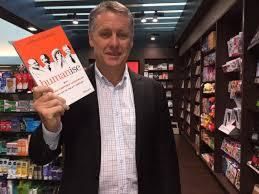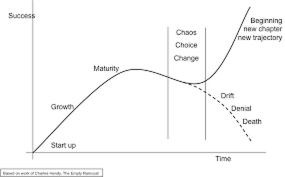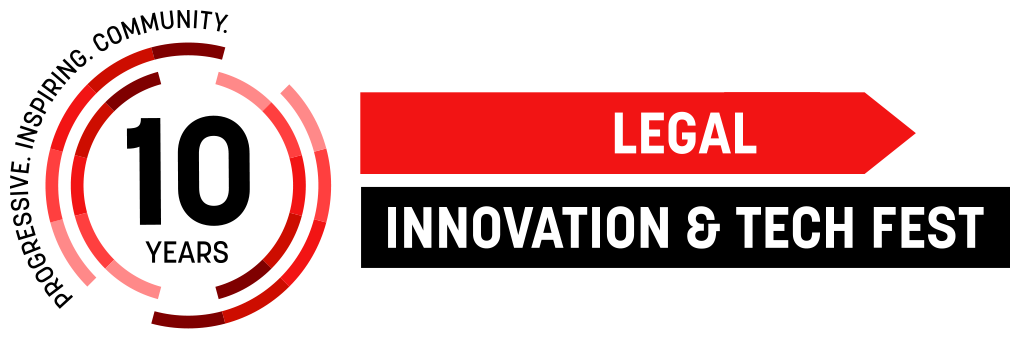Innovate Or Die – The Sigmoid Curve Defines Your Future
)
In my lifetime the average age of a Fortune 500 corporation has gone from 80 years down to just 18 years! Combine this shocking statistic with the fact that even the best corporations such as Google and Amazon have average employee tenure of barely 1 year, and I think you’ll agree we have a problem. Professor Richard Foster from Yale University estimates that by 2020 more than three-quarters of the S&P 500 will be companies that we haven’t heard of yet. Problems and opportunities all fused together – it all depends how you look at it.
There was a time when incumbency in a market or entrenchment in a customer account represented a huge advantage; but now it can appear to be a legacy millstone around your neck. Some are predicting [wrongly] the extinction of sales people, to be steadily replaced by AI social selling autobots [not]. The barrier to entry for new competitors has never been lower; and the process of switching suppliers for customers has never been easier. Web services make integration to ‘best of breed’ cloud application easy. Access to low cost labor, combined with advances in technology and engagement platforms are changing everything. Just have a look at the staggering results of Jack Ma with Alibaba! The numbers of this eCommerce giant are staggering: 100 million buyers shop on the Alibaba site every day with 60 million actual transactions daily. They’ve created 14 million jobs in China and have gown from 18 people to 30,000 staff in just 15 years. Yahoo invested $1 billion in the business. 800 million people use the associated financial transaction system. Alibaba has a bigger market capitalization than Wallmart and IBM… wow! The average age of their staff is 28.
Change is coming to your local area too but the light at the end of the tunnel need not be your near death experience or a train coming the other way. What’s the secret to prosperity in rapidly changing markets and a globally competitive economy? It’s the same as it always been – innovation and great customer service combined with flawless execution of well-conceived strategy, driven by leaders with good values. We will always live in a human world where real connection matters – people will always invest with and buy from those they like and trust. Social platforms are merely another way of engaging. Technology will never replace those who provide leadership, insight and value in every interaction.
In one of my posts I stated that any buffoon can cut costs to temporarily create profit; but cost-cutting is almost always a tactic, not a strategy. You cannot cost cut your way to sustained success because sooner or later a business must provide value and differentiate through innovation, value and service. The world needs builders, not destroyers, but building businesses organically (not just through acquisition) is tough work. It requires real leadership, commitment and passionate sales and marketing people to execute. All this raises a daunting question: How do you escape commoditization and avoid extinction – how do you lead?
There is something staggeringly difficult that every business must do to both survive and prosper. It’s the Mount Everest of personal development and business transformation – we must all innovate and reinvent ourselves… but how? The world is filled with advice on what to do… tell me how!
I am blessed with amazing people in my life. One of my mentors, Anthony Howard, answers the question in the most profound way. He does it with the ‘must read’ leadership book of 2015 which is being published by Wiley in just a few weeks. The title is: Humanise: Why Human-Centred Leadership is the Key to the 21st Century. Anthony Howard is a leadership luminary and I’ve been fortunate to read an advance copy.

He writes about the Sigmoid Curve as it relates to leadership – it’s an ideal framework for innovation and reinvention. The Sigmoid curve is usually used to visualize product lifecycle and manufacturers know all about this curve and use it to refresh products, create upgraded models and then plan for end of life and next generation releases.

But companies need to think in the same terms and Anthony goes on to write the following in his upcoming book:
“In order to avoid the inevitable decline, you need to rethink what you are doing — that is, innovate — as you approach the top of the curve, when everything appears to be going fabulously well. Doing this can sometimes lead to a temporary dip, for instance as profits decline due to increased R&D investment, although success will launch a new curve. This new upswing motion forms an inflexion point and creates the sigmoid curve.
“Changing direction when things are going well is not easy. In business sales are booming, profits are up, people enjoy working for a market leader, customers love you… In government the economy is strong, debt is being paid down, unemployment is low… In your personal life relationships are flourishing, communication is honest and frequent, the world seems radiant … This is often the calm before the storm, the comfort before the seven-year itch, the illusory satisfaction of supportive polls or market research.
“Wise leaders take steps to prepare for the future, just as navigators know the sun does not shine forever and always keep a close eye on weather and water. They know a storm will roll in at some point and always maintain a state of readiness.
“Looking away from what is successful at the moment to what could be successful in the future requires strong leadership. It requires courage to confront the chaos and confusion that marks inflexion points and to navigate the fog of uncertainty.”
Anthony is a practical man and was a merchant seaman in his youth. He went on to lead at the highest levels on business. He goes on later in his book to explain how to navigate the Sigmoid curve.
“The transition from one cycle to the next starts with an initial dip, which can feel like a loss of direction and be financially and emotionally draining. Living in and through the chaos and confusion of inflexion points and disruption is hard work …
“Sometimes the inflexion point is forced on you by an event such as a global financial crisis. Suddenly what was clear becomes murky, what was straightforward becomes confused. Strategic plans are binned before they can gather dust. Employees are not sure how to act or what to do. The firm is facing a crisis, and you are the leader at the helm. What do you do?
“Only one strategy works in times of chaos and confusion: Lead by purpose. Ensure people know the reason why. You have no idea how long it will take to work through the inflexion point, nor any great clarity about how things will look on the other side. In times of clear weather and steady-as-she-goes navigation you can make three- and five-year plans. In times of confusion and chaos you can focus only on longer-term purpose, since only it remains clear. Purpose stands like the North Star, or a distant lighthouse, toward which you can steer through the storm.”
The above text is an extract from Humanise. Why Human-Centred Leadership is the key to the 21st century, copyright (c) Anthony Howard, 2015, John Wiley & Sons Australia Ltd. If you aspire to leadership then this book is essential reading; I promise you that it has the power to change your business and your life. If you would like to download a sample chapter, go to Anthony Howard’s LinkedIn profile and download from the Summary section.
Here are some parting thoughts from me. Markets change and competitors are constantly seeking to out-fox and out-manoeuvre you. Whether it be from disruptive technologies, new market entrants, political and economic change, demographic shifts, whatever… you must be able to innovate, change and reinvent yourself for the people and markets you serve. This does not mean that you abandon timeless values and principles of ethics; but it does mean you must embrace change as you lead. There is no such thing as steady-state or the status quo in business, politics, or personal life for that matter – feelings of certainly are illusionary. The reality is that your business is either growing or withering. Grow it must or it will fade and die.
The secrets to re-booting your Sigmoid curve include being visionary because the best way to predict the future is to invent it! You must also have customer intimacy in your chosen markets and obsessively listen to your clients and anticipate their needs. You also need a killer team of passionate people; everywhere within the organization (except maybe the accounting department). Finally, have a massive bias toward action and be willing to fail (but fail fast and get off dead horses immediately) while passing the credit on to your team for every success. The leader is the culture of any organization so be the change you need in your people. Be the best CEO you can be, even if you are just CEO of your department or team. CEO stands for: Chief Example Officer and Chief Encouragement Officer.
This article originally appeared on LinkedIn Pulse.

Tony J Hughes is a best selling author and speaker in the field of sales leadership. He has three decades of business leadership experience and has also taught for the University of Sydney and the University of Technology, Sydney, Australia. Tony’s LinkedIn blog is widely read and he can be found at RSVPselling.com and TonyHughes.com.au.

